Fleet perspectives on clean vehicles: While many corporations have ambitious sustainability targets in place, greening their fleets is going to take a while. Automotive Fl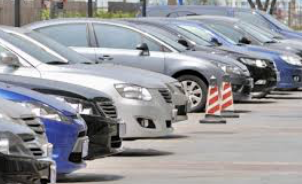 eet just published an in-depth look at the state of clean transportation through interviews with several fleet managers and suppliers. Fleets are paying attention to an onslaught of future electrified product plans among several global automakers; and commitment by several corporations to become carbon neutral or all-electric in the next five to 10 years. As for now, manufacturer incentives for fleets make gasoline- and diesel-powered vehicles more appealing than hybrid or electric vehicles. Lack of demand for electrified vehicles has been part of it, according to Tim Cengel, manager, manufacturer relations for Wheels, which has kept automakers staying conservatie in production volumes being set for hybrids and EVs
eet just published an in-depth look at the state of clean transportation through interviews with several fleet managers and suppliers. Fleets are paying attention to an onslaught of future electrified product plans among several global automakers; and commitment by several corporations to become carbon neutral or all-electric in the next five to 10 years. As for now, manufacturer incentives for fleets make gasoline- and diesel-powered vehicles more appealing than hybrid or electric vehicles. Lack of demand for electrified vehicles has been part of it, according to Tim Cengel, manager, manufacturer relations for Wheels, which has kept automakers staying conservatie in production volumes being set for hybrids and EVs
Ford abandoning cars: With Ford essentially exiting the car business in North America, the Ford Fusion will be getting axed, along with the Fiesta and Taurus. The Mustang and Focus will still be produced. The automaker will only be offering the Focus Active hatchback as a debut model in 2019. The Ford Fusion had been selling well in the hybrid market and its plug-in hybrid version. The Fusion Hybrid has been beating the Toyota Prius in sales several times in the past couple of years, but it will be going away. Ford Motor Co. has been losing money producing and selling cars and will be focusing more on trucks and SUVs.
Amazon and UberEats taking the lead: The urban mobility sector saw a few interesting announcements over the past week. Amazon is offering a new perk 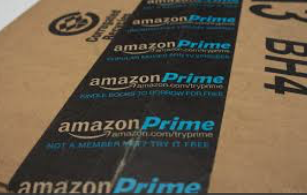 to its 100 million Amazon Prime subscribers. Millions of owners of General Motors and Volvo vehicles in 37 cities will be able to have Amazon packages delivered to the trunk of their vehicles. The In-Car Delivery program comes months after the company launched a program allowing homeowners to provide a digital key to allow delivery drivers to drop a package inside their home………. A convincing argument is being made that rapid growth in online delivery services will be adding to urban traffic congestion and pollution. Manhattan is seeing UPS and FedEx paying millions of dollars in parking fees, with commuters upset about the growing traffic congestion coming from the fast-growing online shopping business………… Uber Eats is taking the lead in meal delivery services in the U.S., bringing in nearly as much revenue as GrubHub. Consumers are now spending more on UberEats than on any other food delivery service in nine of the 22 most-populous U.S. cities, according to a new study.
to its 100 million Amazon Prime subscribers. Millions of owners of General Motors and Volvo vehicles in 37 cities will be able to have Amazon packages delivered to the trunk of their vehicles. The In-Car Delivery program comes months after the company launched a program allowing homeowners to provide a digital key to allow delivery drivers to drop a package inside their home………. A convincing argument is being made that rapid growth in online delivery services will be adding to urban traffic congestion and pollution. Manhattan is seeing UPS and FedEx paying millions of dollars in parking fees, with commuters upset about the growing traffic congestion coming from the fast-growing online shopping business………… Uber Eats is taking the lead in meal delivery services in the U.S., bringing in nearly as much revenue as GrubHub. Consumers are now spending more on UberEats than on any other food delivery service in nine of the 22 most-populous U.S. cities, according to a new study.
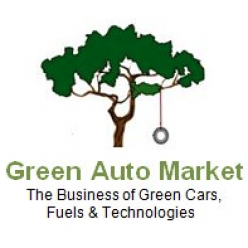



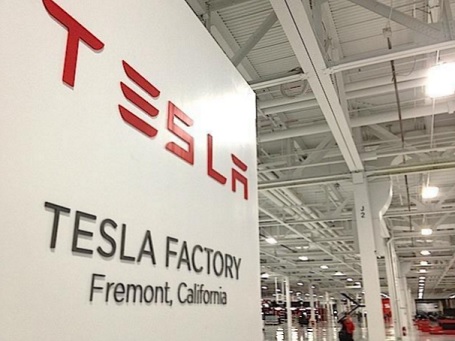 e number of injuries in the official count by stating some were minor or due to personal medical conditions. Tesla denied the accusations in a blog post, calling the publication an “extremist organization working directly with union supporters to create a calculated disinformation campaign against Tesla.”
e number of injuries in the official count by stating some were minor or due to personal medical conditions. Tesla denied the accusations in a blog post, calling the publication an “extremist organization working directly with union supporters to create a calculated disinformation campaign against Tesla.”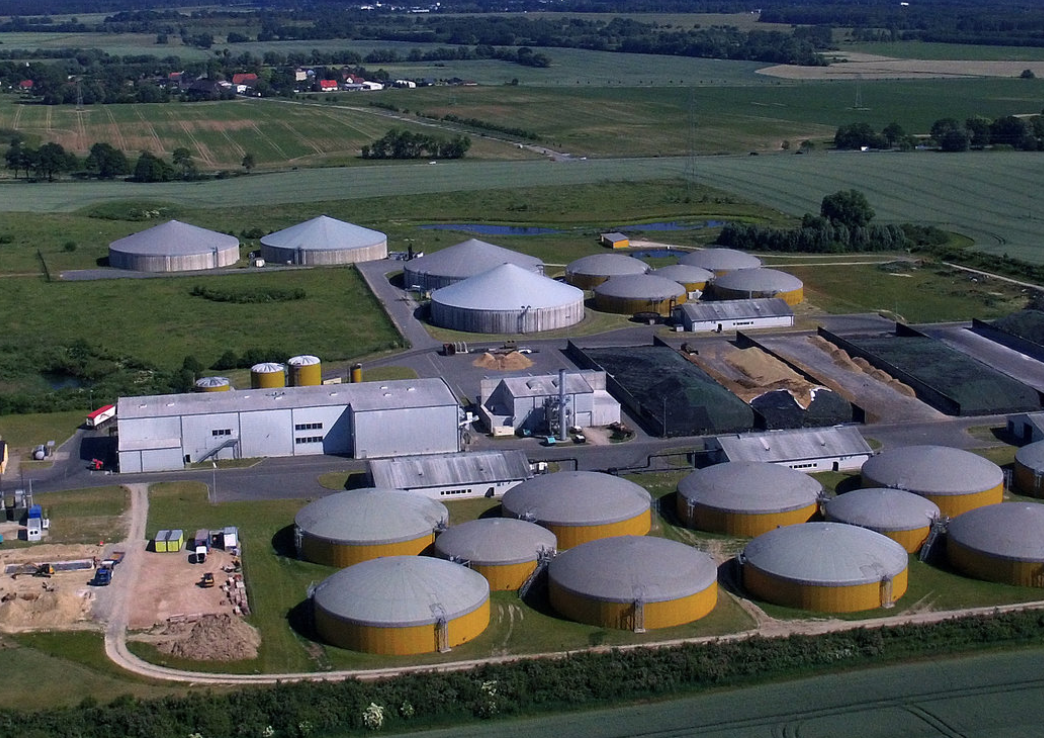 natural gas (RNG) production facilities in North America. The refreshed database shows that the RNG Coalition is on track to double the number of RNG production facilities in North America in half the time that was set in the original goal of what was to be accomplished by 2025. There were 51 RNG facilities in place at the time the coalition was formed in 2015. The new database shows an additional 23 RNG production facilities are currently under construction and another 23 have reached stages of substantial development prior to commencing construction. It also shows there are now at least 76 operations RNG facilities in North America, which makes for 85% growth from the 41 projects that were built between 1982 and 2014.
natural gas (RNG) production facilities in North America. The refreshed database shows that the RNG Coalition is on track to double the number of RNG production facilities in North America in half the time that was set in the original goal of what was to be accomplished by 2025. There were 51 RNG facilities in place at the time the coalition was formed in 2015. The new database shows an additional 23 RNG production facilities are currently under construction and another 23 have reached stages of substantial development prior to commencing construction. It also shows there are now at least 76 operations RNG facilities in North America, which makes for 85% growth from the 41 projects that were built between 1982 and 2014.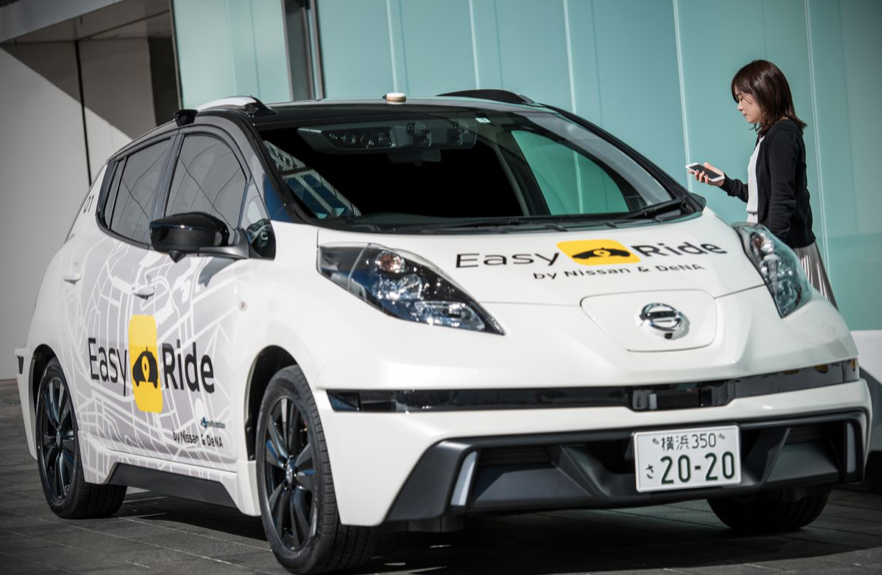 modified Nissan Leafs. Easy Ride taps into Seamless Autonomous Mobility, which was developed by Nissan from NASA technology, for the automaker’s fleet operation system. Unexpected occurrences are being tested, such as road construction or an event filled with cars and pedestrians blocking traffic. The robotaxi will have support from in-vehicle artificial intelligence and staff working at a control center monitoring the rides. Nissan is counting on its collaboration with DeNA, a Japanese mobile gaming and communications giant. Easy Ride comes with a DeNA-designed smartphone app, where users can hail a taxi by choosing a time slot and where they want to be picked up from a list of preset destinations. Riders view a tablet computer installed inside the car about recommended events in the area; and users are also sent discount coupons for restaurants participating in an Easy Ride affiliate program.
modified Nissan Leafs. Easy Ride taps into Seamless Autonomous Mobility, which was developed by Nissan from NASA technology, for the automaker’s fleet operation system. Unexpected occurrences are being tested, such as road construction or an event filled with cars and pedestrians blocking traffic. The robotaxi will have support from in-vehicle artificial intelligence and staff working at a control center monitoring the rides. Nissan is counting on its collaboration with DeNA, a Japanese mobile gaming and communications giant. Easy Ride comes with a DeNA-designed smartphone app, where users can hail a taxi by choosing a time slot and where they want to be picked up from a list of preset destinations. Riders view a tablet computer installed inside the car about recommended events in the area; and users are also sent discount coupons for restaurants participating in an Easy Ride affiliate program.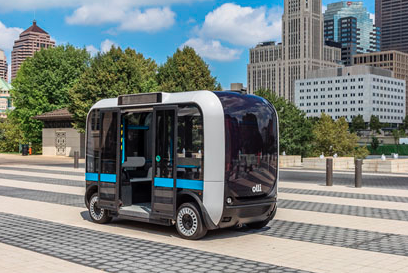 partnership will start with providing the eDrive system for Olli. Beyond that, the companies will work on new technologies to accelerate future autonomous and transportation-as-a-service (TaaS) vehicle production.
partnership will start with providing the eDrive system for Olli. Beyond that, the companies will work on new technologies to accelerate future autonomous and transportation-as-a-service (TaaS) vehicle production.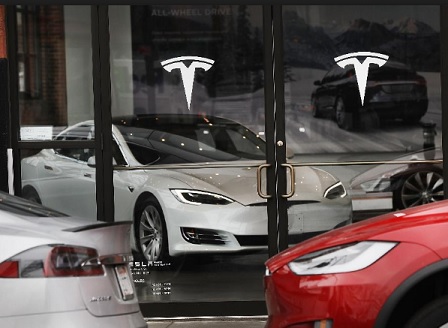 period of increasing challenges. On April 2,
period of increasing challenges. On April 2, 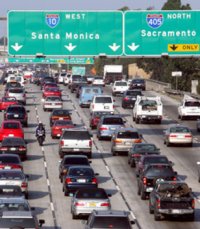 giving up their personal vehicles to switch over entirely to other modes of transportation — and that crossed over all the demographics of age, geographic region, education, and income levels. Only 6.5% of them found car ownership to be a hassle. The survey found that ride-hailing services provide some great benefits — especially in urban areas and in places where parking is an inconvenience.
giving up their personal vehicles to switch over entirely to other modes of transportation — and that crossed over all the demographics of age, geographic region, education, and income levels. Only 6.5% of them found car ownership to be a hassle. The survey found that ride-hailing services provide some great benefits — especially in urban areas and in places where parking is an inconvenience.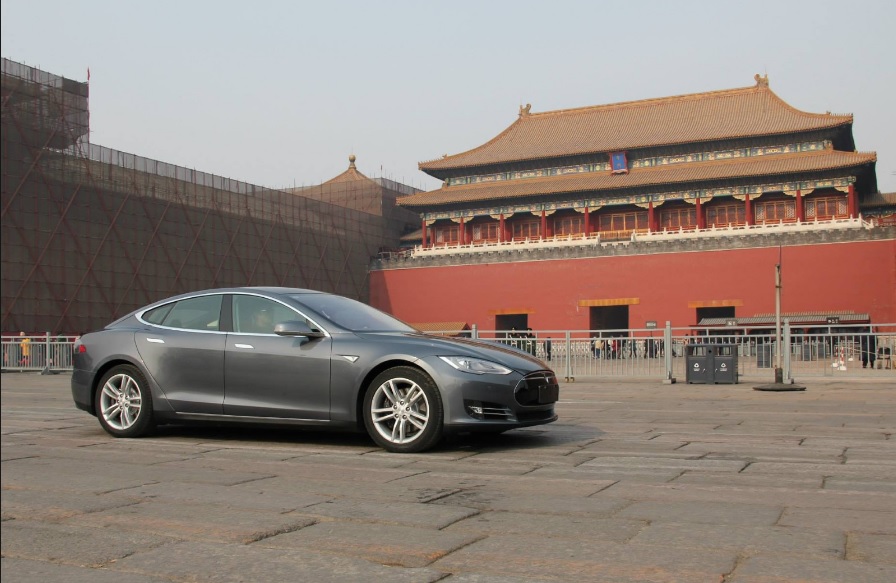 the trade war escalates with the Trump administration. Other automakers could be hit by SUV tariffs if enacted, but having joint venture alliances with Chinese companies will soften the blow. China is Tesla’s largest foreign market, and Tesla competitors will have a real advantage in China. CEO Elon Musk continues facing a wave of serious challenges. During the Q1 earnings call this week, the company announced that production and sales of the Model 3 have been increasing, with 2,020 Model 3s built during the last week of March up to about 5,000 units a month expected in about three months. But the
the trade war escalates with the Trump administration. Other automakers could be hit by SUV tariffs if enacted, but having joint venture alliances with Chinese companies will soften the blow. China is Tesla’s largest foreign market, and Tesla competitors will have a real advantage in China. CEO Elon Musk continues facing a wave of serious challenges. During the Q1 earnings call this week, the company announced that production and sales of the Model 3 have been increasing, with 2,020 Model 3s built during the last week of March up to about 5,000 units a month expected in about three months. But the 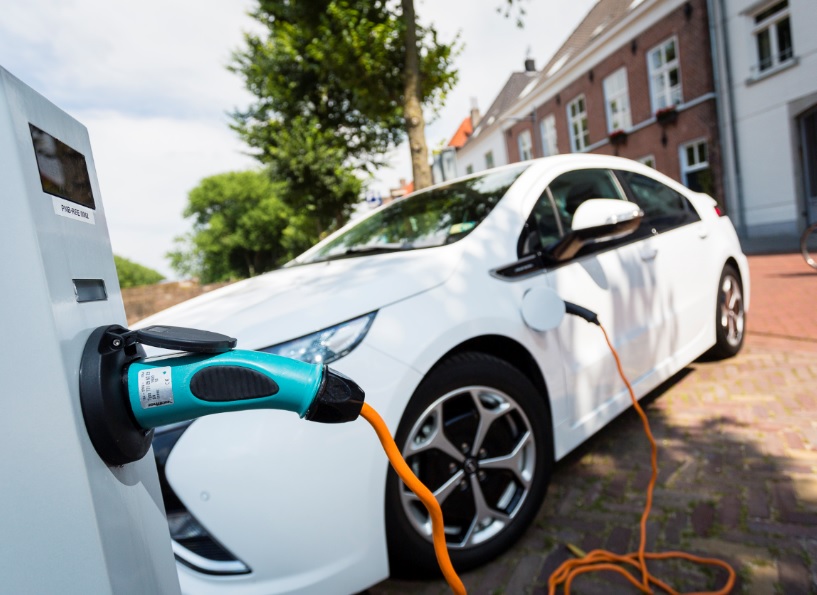 sales, the study explores steps that will need to be taken to make it up to 25% of new vehicle sales by 2030. To become mass producible, four factors will need to be addressed, according to McKinsey.
sales, the study explores steps that will need to be taken to make it up to 25% of new vehicle sales by 2030. To become mass producible, four factors will need to be addressed, according to McKinsey.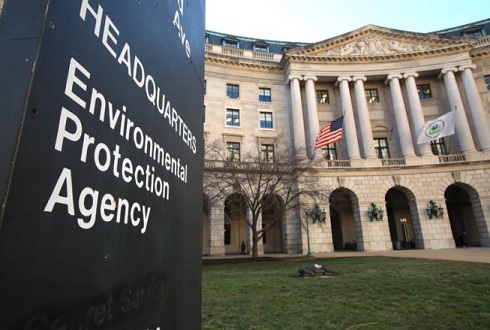 new rule-making timeline. The new standards could be released as early as this summer. Bloomberg and Reuters, citing anonymous sources, reported on Friday that the second round of rule, covering 2022-2025, will be relaxed. Automakers had asked the Trump administration to stick to the original April 1 deadline, and to block the Obama administration’s late decision to accelerate and end the review. The National Highway Traffic Safety Administration has differing concerns than the EPA under the Obama administration. Margo Oge, the former EPA official who helped develop the fuel economy and emissions standards, said she is worried that NHTSA is preparing to “gut the 2025 program.” Her concerns have been raised by reports in Bloomberg that NHTSA was considering options such as dropping fleetwide fuel economy to 35.7 mpg by 2026, down from the 46.6 mpg target set under the Obama administration.
new rule-making timeline. The new standards could be released as early as this summer. Bloomberg and Reuters, citing anonymous sources, reported on Friday that the second round of rule, covering 2022-2025, will be relaxed. Automakers had asked the Trump administration to stick to the original April 1 deadline, and to block the Obama administration’s late decision to accelerate and end the review. The National Highway Traffic Safety Administration has differing concerns than the EPA under the Obama administration. Margo Oge, the former EPA official who helped develop the fuel economy and emissions standards, said she is worried that NHTSA is preparing to “gut the 2025 program.” Her concerns have been raised by reports in Bloomberg that NHTSA was considering options such as dropping fleetwide fuel economy to 35.7 mpg by 2026, down from the 46.6 mpg target set under the Obama administration.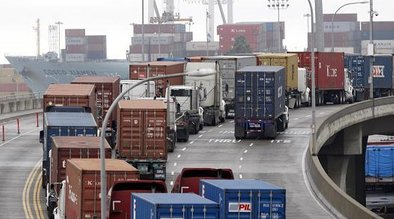 electricity and diesel in a pilot program. Mack trucks is testing out an automated GPS-based system that can switch between multiple modes of operation to reduce diesel consumption and air pollution. The geofencing utilizes GOA and radio-frequency identification technology at the ports of Los Angeles and Long Beach, which has been able to increase fuel savings in the 25-to-30 percent range. The ports have become a hub for alternative fuel testing; that includes a Cummins Westport project testing low NOx natural gas engines, Toyota testing a fuel cell electric drayage truck, and a few battery-electric BYD drayage trucks moving freight from the ports to area warehouses.
electricity and diesel in a pilot program. Mack trucks is testing out an automated GPS-based system that can switch between multiple modes of operation to reduce diesel consumption and air pollution. The geofencing utilizes GOA and radio-frequency identification technology at the ports of Los Angeles and Long Beach, which has been able to increase fuel savings in the 25-to-30 percent range. The ports have become a hub for alternative fuel testing; that includes a Cummins Westport project testing low NOx natural gas engines, Toyota testing a fuel cell electric drayage truck, and a few battery-electric BYD drayage trucks moving freight from the ports to area warehouses.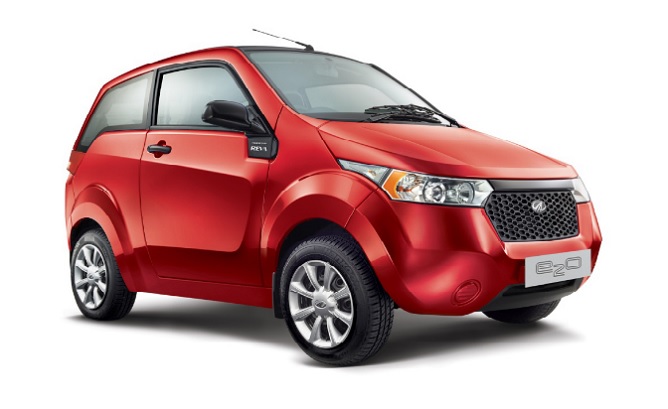 electric vehicle. The companies see it as an opportunity to leverage Ford’s global reach and expertise and Mahindra’s scale in India and its successful operating model. One of the SUVs will be a midsize sport utility vehicle built on the Mahindra platform; it will be sold independently by both companies as separate brands. They’ve also agreed to evaluate co-development of a compact SUV and electric vehicle. They’ll also be working on connected car solutions for consumers. Mahindra has been bringing EVs to the Indian market in recent years, including the e20 through its Reva subsidiary.
electric vehicle. The companies see it as an opportunity to leverage Ford’s global reach and expertise and Mahindra’s scale in India and its successful operating model. One of the SUVs will be a midsize sport utility vehicle built on the Mahindra platform; it will be sold independently by both companies as separate brands. They’ve also agreed to evaluate co-development of a compact SUV and electric vehicle. They’ll also be working on connected car solutions for consumers. Mahindra has been bringing EVs to the Indian market in recent years, including the e20 through its Reva subsidiary.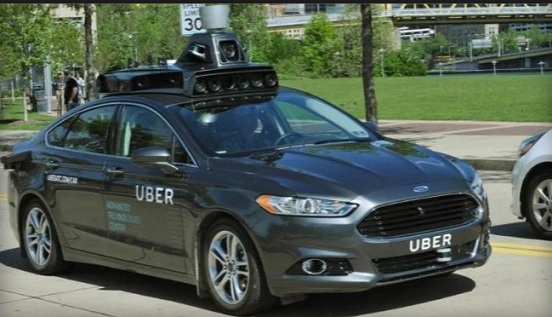 pedestrian fatality in Tempe, Ariz. That fatality involving an Uber test vehicle and driver prompted the ride-hailing firm to suspend its tests in Tempe, Ariz., Pittsburgh, and San Francisco. Toyota has put its fleet of autonomous test vehicles on hold in Ann Arbor, Mich., and in the San Francisco area. Self-driving startup NuTonomy has put its Boston test vehicles on hold after city officials requested it after the Arizona fatal crash. Ford and General Motors are continuing their tests on public roads; Waymo and Lyft declined to comment on the status of their self-driving car test fleets since the fatal Uber collision.
pedestrian fatality in Tempe, Ariz. That fatality involving an Uber test vehicle and driver prompted the ride-hailing firm to suspend its tests in Tempe, Ariz., Pittsburgh, and San Francisco. Toyota has put its fleet of autonomous test vehicles on hold in Ann Arbor, Mich., and in the San Francisco area. Self-driving startup NuTonomy has put its Boston test vehicles on hold after city officials requested it after the Arizona fatal crash. Ford and General Motors are continuing their tests on public roads; Waymo and Lyft declined to comment on the status of their self-driving car test fleets since the fatal Uber collision.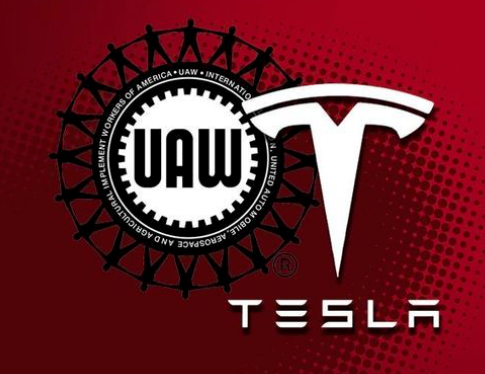 Fremont as Tesla ramps up the Model 3 production line to try and reach goals that had been set last year. The UAW complaints may present another challenge for Tesla management to overcome to reach these targets and retain a stable workforce. The union conflict had been publicized in February 2017 when Tesla employee Jose Moran posted a blog article detailing harsh working conditions. Moran said that some of these workers had contacted the union because of it. In October, Tesla fired about 700 workers, which CEO Elon Musk said was part of routine performance reviews. Volkswagen has faced similar efforts from the UAW to organize its plant in Chattanooga. The union lost a vote in 2014 to unionize factory employees, but has successfully organized a group within the plant to stay with it. Workers in the greater Bay Area, where Fremont is based, have been known to be more supportive of unions than in other parts of the country; but the UAW and all the other major unions in the U.S. have been losing support and membership for several decades. Convincing a majority of the workforce to bring in the union is very difficult to carry out.
Fremont as Tesla ramps up the Model 3 production line to try and reach goals that had been set last year. The UAW complaints may present another challenge for Tesla management to overcome to reach these targets and retain a stable workforce. The union conflict had been publicized in February 2017 when Tesla employee Jose Moran posted a blog article detailing harsh working conditions. Moran said that some of these workers had contacted the union because of it. In October, Tesla fired about 700 workers, which CEO Elon Musk said was part of routine performance reviews. Volkswagen has faced similar efforts from the UAW to organize its plant in Chattanooga. The union lost a vote in 2014 to unionize factory employees, but has successfully organized a group within the plant to stay with it. Workers in the greater Bay Area, where Fremont is based, have been known to be more supportive of unions than in other parts of the country; but the UAW and all the other major unions in the U.S. have been losing support and membership for several decades. Convincing a majority of the workforce to bring in the union is very difficult to carry out.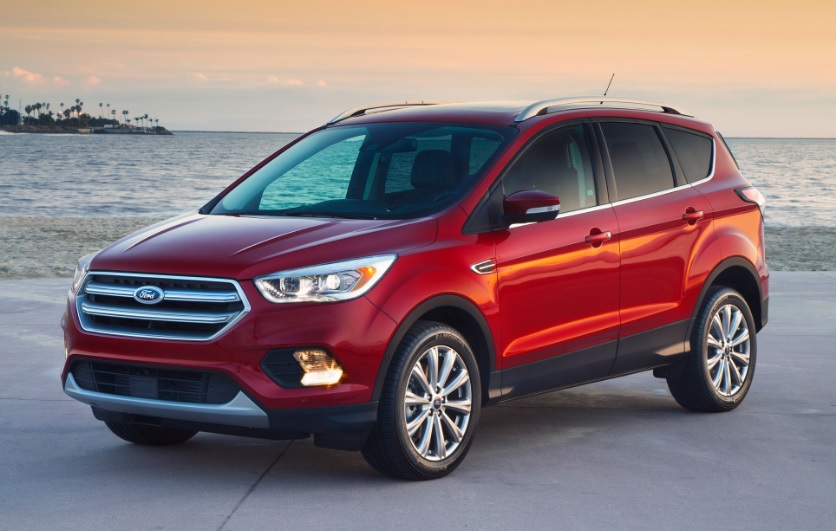 lead the company through a transition over to more profitable trucks and crossovers, electrification, and smart vehicle technologies. Last week, Ford said it will be replacing more than 75% of its North American lineup and adding four nameplates in the next two years. By 2020, the automaker hopes to see pickups, utilities, and vans making up 86% of its sales, up from about 70% today. The automaker will be selling eight utilities in North America, up from six today.
lead the company through a transition over to more profitable trucks and crossovers, electrification, and smart vehicle technologies. Last week, Ford said it will be replacing more than 75% of its North American lineup and adding four nameplates in the next two years. By 2020, the automaker hopes to see pickups, utilities, and vans making up 86% of its sales, up from about 70% today. The automaker will be selling eight utilities in North America, up from six today.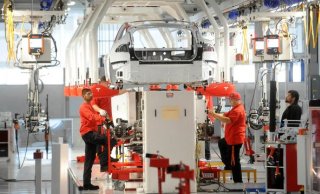 3 production. CNBC reported Wednesday that a current Tesla engineer estimated that 40% of parts made or received at the Fremont factory require rework. Sometimes, the parts need to be shipped back out of the plant for rework, and in other cases, vehicles seem to be pulled off the assembly line for repairs before being shipped out. Questions are being raised out how effective Musk has been managing the company through a difficult conversion to a mass market manufacturer. The electric automaker has been seeing other problems come up, including three of its top financial executives leaving recently. News came out earlier this week that the company stopped production in Fremont to adjust equipment that can increase the production rate. Production was reportedly suspended from February 20 to February 24 to make these changes. Some of the problems have also been traced back the Gigafactory battery plant near Reno, Nev. But most of the problems seem to be coming from the Fremont plant.
3 production. CNBC reported Wednesday that a current Tesla engineer estimated that 40% of parts made or received at the Fremont factory require rework. Sometimes, the parts need to be shipped back out of the plant for rework, and in other cases, vehicles seem to be pulled off the assembly line for repairs before being shipped out. Questions are being raised out how effective Musk has been managing the company through a difficult conversion to a mass market manufacturer. The electric automaker has been seeing other problems come up, including three of its top financial executives leaving recently. News came out earlier this week that the company stopped production in Fremont to adjust equipment that can increase the production rate. Production was reportedly suspended from February 20 to February 24 to make these changes. Some of the problems have also been traced back the Gigafactory battery plant near Reno, Nev. But most of the problems seem to be coming from the Fremont plant. going to soften up on fuel economy and emissions standards, and may be in conflict with what the state of California is planning to do. During an interview with Bloomberg News on Tuesday,
going to soften up on fuel economy and emissions standards, and may be in conflict with what the state of California is planning to do. During an interview with Bloomberg News on Tuesday,  Trucks is taking natural gas and electricity seriously as alternative fuels, but neither will be taking the lead away from diesel anytime soon. Daimler’s Freightliner Trucks subsidiary showed off several natural gas-powered trucks in the exhibit hall. The truck maker’s Fuso division is rolling out the eCanter electric medium-duty truck and the E-Fuso Class 8 electric truck. But for now, diesel is still the most efficient and cost-effective fuel, the Daimler executive said. While natural gas and battery-powered have become the most talked-about alternatives to diesel, their limitations are causing fleets to look more carefully at their options, she said. Charging and alternative fueling stations are very limited in comparison to ample diesel stations across the country. There’s also the question of realistic range for the vehicle. Electric trucks are particularly vulnerable to temperature, cargo loads, and speed traveled on highways in having enough range to carry out the freight hauling goals of fleet operators. Schaefer does see gains being made in new connected vehicle technologies, including active safety systems. She also supports the idea that green goes beyond tailpipe emissions; managers are encouraged to bring sustainability practices into their strategic planning while reducing cost and waste. Other highlights at the Green Truck Summit included XL Hybrids introducing the Ford F-150 XLP plug-in hybrid pickup, which can improve fuel economy by up to 50%. Lightning Systems showed off an electric Fort Transit cargo van that’s adding a hydrogen fuel cell vehicle that can extend range by 200 miles.
Trucks is taking natural gas and electricity seriously as alternative fuels, but neither will be taking the lead away from diesel anytime soon. Daimler’s Freightliner Trucks subsidiary showed off several natural gas-powered trucks in the exhibit hall. The truck maker’s Fuso division is rolling out the eCanter electric medium-duty truck and the E-Fuso Class 8 electric truck. But for now, diesel is still the most efficient and cost-effective fuel, the Daimler executive said. While natural gas and battery-powered have become the most talked-about alternatives to diesel, their limitations are causing fleets to look more carefully at their options, she said. Charging and alternative fueling stations are very limited in comparison to ample diesel stations across the country. There’s also the question of realistic range for the vehicle. Electric trucks are particularly vulnerable to temperature, cargo loads, and speed traveled on highways in having enough range to carry out the freight hauling goals of fleet operators. Schaefer does see gains being made in new connected vehicle technologies, including active safety systems. She also supports the idea that green goes beyond tailpipe emissions; managers are encouraged to bring sustainability practices into their strategic planning while reducing cost and waste. Other highlights at the Green Truck Summit included XL Hybrids introducing the Ford F-150 XLP plug-in hybrid pickup, which can improve fuel economy by up to 50%. Lightning Systems showed off an electric Fort Transit cargo van that’s adding a hydrogen fuel cell vehicle that can extend range by 200 miles.